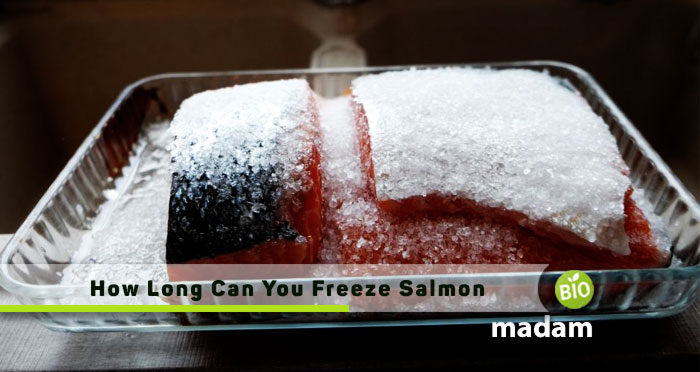Salmon is one of the most popular and nutrient-dense types of fish. Rich in omega-3 fatty acids and an excellent source of protein, vitamins, and minerals, salmon can be a tasty and healthy addition to any diet. Many people enjoy grilled, baked, or pan-seared salmon fillets as an easy weeknight dinner.
However, busy schedules don’t always allow for frequent trips to the fish market. This is where freezing salmon can come in handy. Freezing allows you to buy fresh salmon in bulk when you find a good deal or catch your own, and enjoy it for many months to come. But how long can salmon stay fresh and safe to eat in the freezer?
This article will look at the freezer life of different types of salmon and provide tips for freezing salmon properly so it retains quality and nutrition. With the right freezing and thawing techniques, you can enjoy delicious frozen salmon for up to six months or more.
Can You Freeze Salmon?
When it comes to freezing salmon, the key is to strike a balance between convenience and maintaining the fish’s optimal taste and texture. Salmon should be as fresh as possible before freezing for best quality. Ideally, you should freeze salmon the same day it was caught or purchased. The fresher the salmon, the better it will retain its texture, moisture, and flavor when frozen and thawed.
However, freezing is a viable option for those looking to enjoy this seafood superstar regularly. Different types of salmon – smoked, canned, and raw – have varying freezing durations.
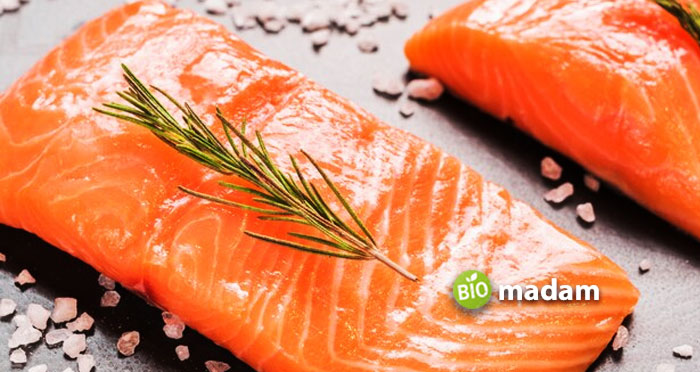
How Long Can You Freeze Salmon in the Freezer?
Freezing salmon is a convenient way to extend its shelf life, but it’s essential to understand the recommended durations to maintain optimal flavor and texture. Here’s a breakdown of the guidelines:
Fresh Salmon
You can freeze fresh salmon for 2-3 months maximum to maintain the best quality and texture. Eat fresh frozen salmon within this time frame for optimal freshness. Freezing longer than 2-3 months will cause the texture and flavor to decline.
Previously Frozen Salmon
Salmon that has been previously frozen can be safely frozen again, but the texture will become mushier with each freeze. Refreezing can also lead to moisture loss. For best results, eat refrozen salmon within 1 month to maintain quality. Avoid refreezing salmon more than once.
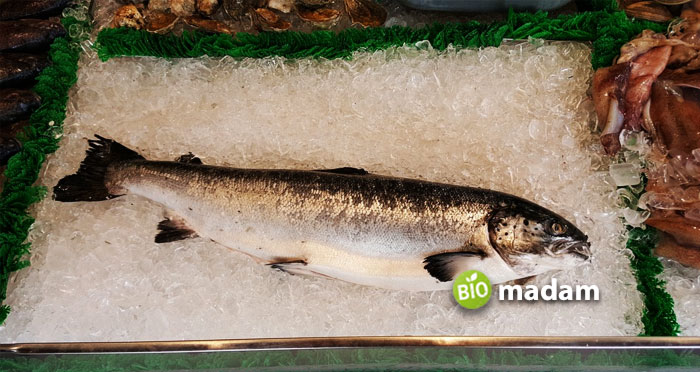
Varying Recommendations
There is a range of recommendations regarding the optimal duration for freezing salmon while preserving its freshness. Some experts suggest consuming frozen salmon within three months to ensure optimal taste and texture.
How to Freeze Salmon
Freezing salmon is a simple process that ensures the fish maintains its quality for an extended period. But, if you’re confused in how to store salmon in freezer, here’s a step-by-step guide given:
Prepare the Salmon
Whether you’re dealing with a whole fish or fillets, proper preparation is essential for successful freezing. If using a whole fish, clean and gut it thoroughly. For fillets, ensure they are skin-on and cut them into even portions. Season the salmon with salt, pepper, and any additional spices or herbs to enhance flavor.
Wrap the Salmon
Choose a suitable wrapping method to protect the salmon from freezer burn and maintain its freshness:
- Plastic Freezer Bag: Place the salmon in a durable plastic freezer bag. Squeeze out as much air as possible before sealing to minimize the risk of freezer burn.
- Freezer Wrap: Alternatively, use freezer wrap to tightly encase the salmon. Ensure the wrap is securely sealed to prevent air exposure.
- Aluminum Foil: Another effective method is to wrap the salmon in aluminum foil. Seal the foil tightly around the salmon to create an airtight package.
Label and Date
Before placing the wrapped salmon in the freezer, label the packaging with the type of seafood, in this case, salmon, and the date of freezing. This step is crucial for keeping track of storage durations and ensuring you use the salmon within recommended time frames.
Freeze with Proper Air Circulation
To facilitate good air circulation and even freezing, place the wrapped salmon in a suitable location within the freezer. Ensure that the freezer is set to the recommended temperature for optimal results.
Additional Freezing Method
For those who prefer an alternative freezing method, consider the following:
Milk Carton Method: Place fresh salmon portions in a clean milk carton. Fill the carton with water, leaving some space for expansion. Seal the container tightly to make it airtight, then freeze. This method provides an additional layer of protection against freezer burn.

Can You Freeze Salmon after Cooking?
Yes, you can freeze salmon after cooking, but proper preparation is crucial. Allow the cooked salmon to cool to room temperature, wrap it tightly in plastic wrap, or place it in an airtight container. Label the packaging with the freezing date and consume within a month for optimal quality.
Can You Freeze Salmon in Store Packaging?
Freezing store-packaged salmon is possible, but extra precautions are necessary to maintain freshness. Inspect the store packaging for any damage, and if it’s not airtight, consider wrapping the salmon in plastic wrap or aluminum foil. Label the packaging with the freezing date and handle it carefully to prevent freezer burn.
Can You Freeze Salmon in Aluminum Foil?
Yes, freezing salmon in aluminum foil is a popular method. Season the salmon, place it on a sheet of foil, and wrap it tightly to create an airtight seal. Label the foil with the freezing date. This method protects against freezer burn and allows for easy portioning and thawing when needed.
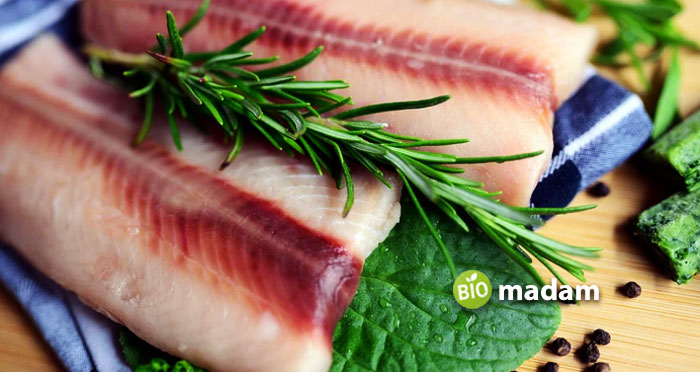
How to Thaw Frozen Salmon
The most straightforward method for thawing frozen salmon is to leave it in the refrigerator overnight, ensuring a gradual thaw that preserves its quality. Follow these steps:
- Cut Open Vacuum Seal: Begin by cutting open the vacuum seal of the frozen salmon.
- Preparation: Place the salmon on a plate or shallow pan lined with a paper towel to capture any liquid.
- Covering: Cover the salmon to prevent any odors from escaping.
- Refrigeration: Position the plate on the bottom shelf of the fridge, typically the coldest part, and allow 8–12 hours for small cuts or up to 24 hours for larger cuts.
For a quicker thaw when time is limited, an alternative method is to use cold water. Here’s how:
- Remove Packaging: Take the salmon out of its packaging and place it in a resealable plastic bag.
- Submerge in Cold Water: Submerge the sealed bag in a bowl of cold water, replacing the water periodically until the fish is thawed. This expedited method usually takes about 10 minutes.
Signs of Spoiled Salmon
Identifying whether salmon has gone bad involves paying attention to several key indicators:
- Fresh salmon should not have a fishy, sour, or ammonia-like odor. If any of these unpleasant scents are detected, the salmon has likely gone bad.
- Fresh salmon should exhibit a vibrant pink or orange color with no discoloration. If the fish appears dull, gray, has dark spots, or displays a filmy white residue, these are signs of spoilage.
- The texture of fresh salmon should be firm and slightly springy to the touch. If the fish feels mushy, slimy, or sticky, it is likely starting to go bad.
- Visible mold or any unusual growth on the surface of the salmon is a clear sign of spoilage. If mold is present, the salmon should not be consumed.
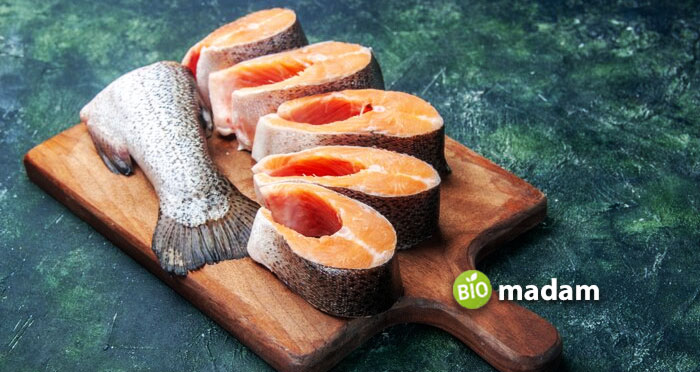
Wrapping Up
Properly freezing and thawing salmon can extend its shelf life for months while preserving texture, moisture, and nutrients. With the right techniques, you can enjoy delicious frozen salmon just as you would fresh. The best way to freeze salmon is in portions to make it easier to defrost later and exactly how you’d need it.
Just be sure to follow the guidelines on freezing durations, storage methods, and signs of spoilage. With the proper handling, frozen salmon can be a great way to reap the benefits of this flavorful fish even when you can’t make it to the market. Read here to know how long to freeze fish.
FAQs
Can you freeze salmon fillets?
Yes, you can freeze salmon fillets successfully. Ensure the fillets are fresh and properly prepared before freezing. Follow the steps mentioned earlier for preparing and wrapping the salmon in airtight packaging, such as plastic freezer bags or aluminum foil. Label the packaging with the freezing date, and store the fillets in the freezer for up to 2-3 months for optimal quality.
Can you freeze salmon patties?
Freezing salmon patties is a convenient option for future meals. After cooking the salmon patties, allow them to cool to room temperature. Wrap each patty individually in plastic wrap or aluminum foil, or store them in airtight containers. Label the packaging with the freezing date, and consume the frozen salmon patties within a month for the best texture and flavor.
How long to freeze salmon for sushi?
If you plan to use salmon for sushi, it’s crucial to freeze it properly to eliminate parasites. According to FDA guidelines, freezing salmon at -4°F (-20°C) or below for at least 7 days is recommended to kill parasites. However, for home freezing, maintaining a lower temperature and freezing for a more extended period, such as 24 hours, ensures safety. Always check the guidelines and recommendations for safe sushi preparation.
Hey, I am Vanessa from U.S. – a die-hard food lover to try and share my tasty tidbits with you people! I may not have a Master’s in food tech, but my this love affair let me explore the diverse culinary options around me, and here I am, sharing my journey with you.

